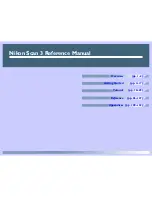
49
Sound Edge Application Software
Time
Level
Maximum
Minimum
1
Attack Rate
2
Decay 1 Rate
3
Decay Level
5
Release Rate
Key Off
Key On
4
Decay 2 Rate
1
Attack Rate:
Sets the attack time—that is, the time it takes for a sound to reach the maximum level after a
key is pressed. The higher the value, the faster the sound reaches the maximum. The initial
value is 15.
2
Decay 1 Rate:
Sets the time it takes the sound level to decay from the maximum level to the decay level.
The higher the value, the faster the decay time to reach the decay level. The initial value is 2.
3
Decay Level:
Sets the decay level. The higher the value, the larger the decay level. The initial value is 14.
4
Decay 2 Rate:
Sets the time it takes the sound to decrease from the decay level. The higher the value, the
faster the decay time. The initial value is 0.
5
Release Rate:
Sets the time it takes the sound to sustain after a key is released. The higher the value, the
faster the sound cuts off. The initial value is 15.
Common:
Parameters common to the entire waveform.
6
Sample Note:
Assigns the original pitch of the wave data to a note number. Valid values are from 0 to 127.
The initial value is 60.
7
Fine Tune:
Permits precise tuning. Valid values are from –100, through 0, to 100 (100 cents=a semitone).
The initial value is 0.
8
Total Level:
Sets the output volume. Valid values are from 0 to 127. The initial value is 0.
9
Sample Frequency:
Sets the sampling frequency for the wave data.
Effects:
Parameters that let you create effects such as vibrato or tremolo.
10
LFO Speed:
Sets the LFO speed. Valid values are from 0 to 8 (maximum). The initial value is 5. This
setting changes the vibrato or tremolo effect.
£
LFO (Low Frequency Oscillator) is an oscillator that generates low-frequency signals and is used to create
vibrato or tremolo effects.
















































